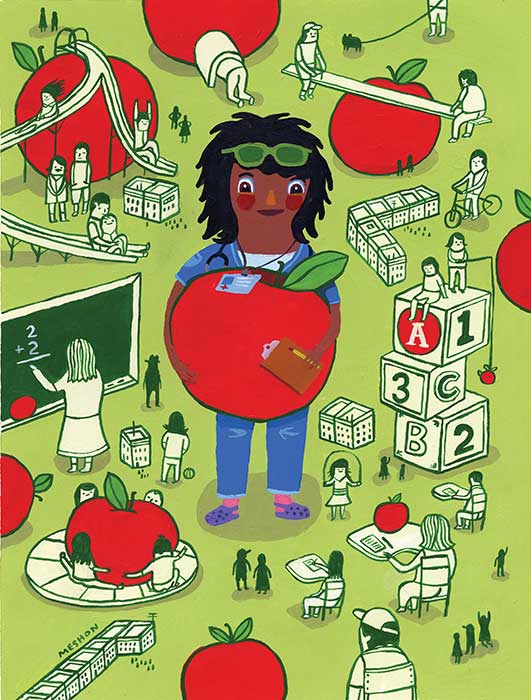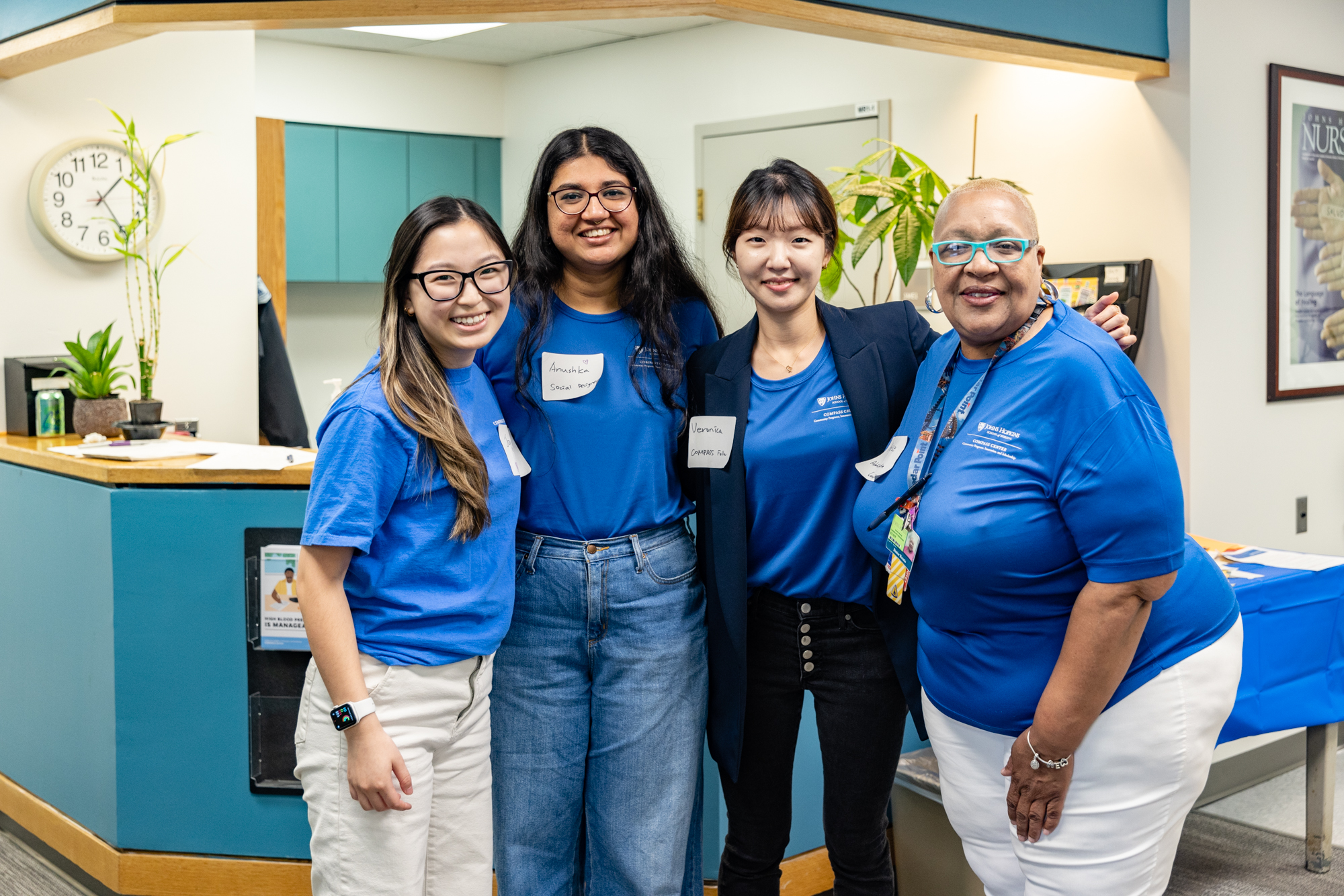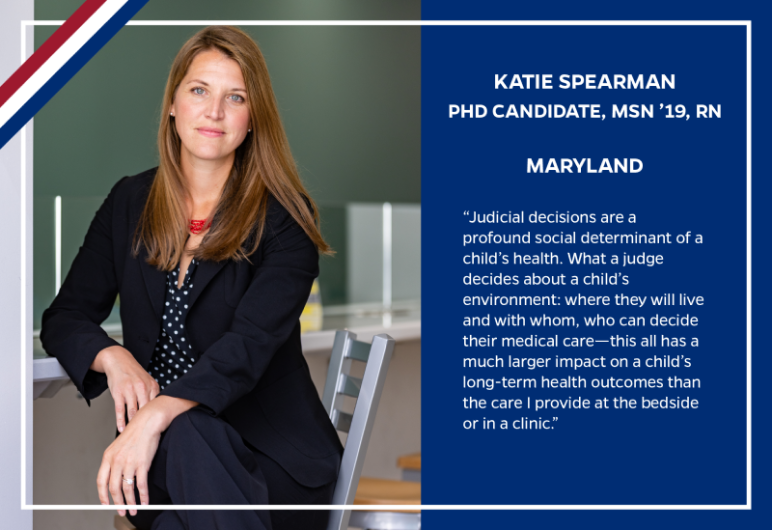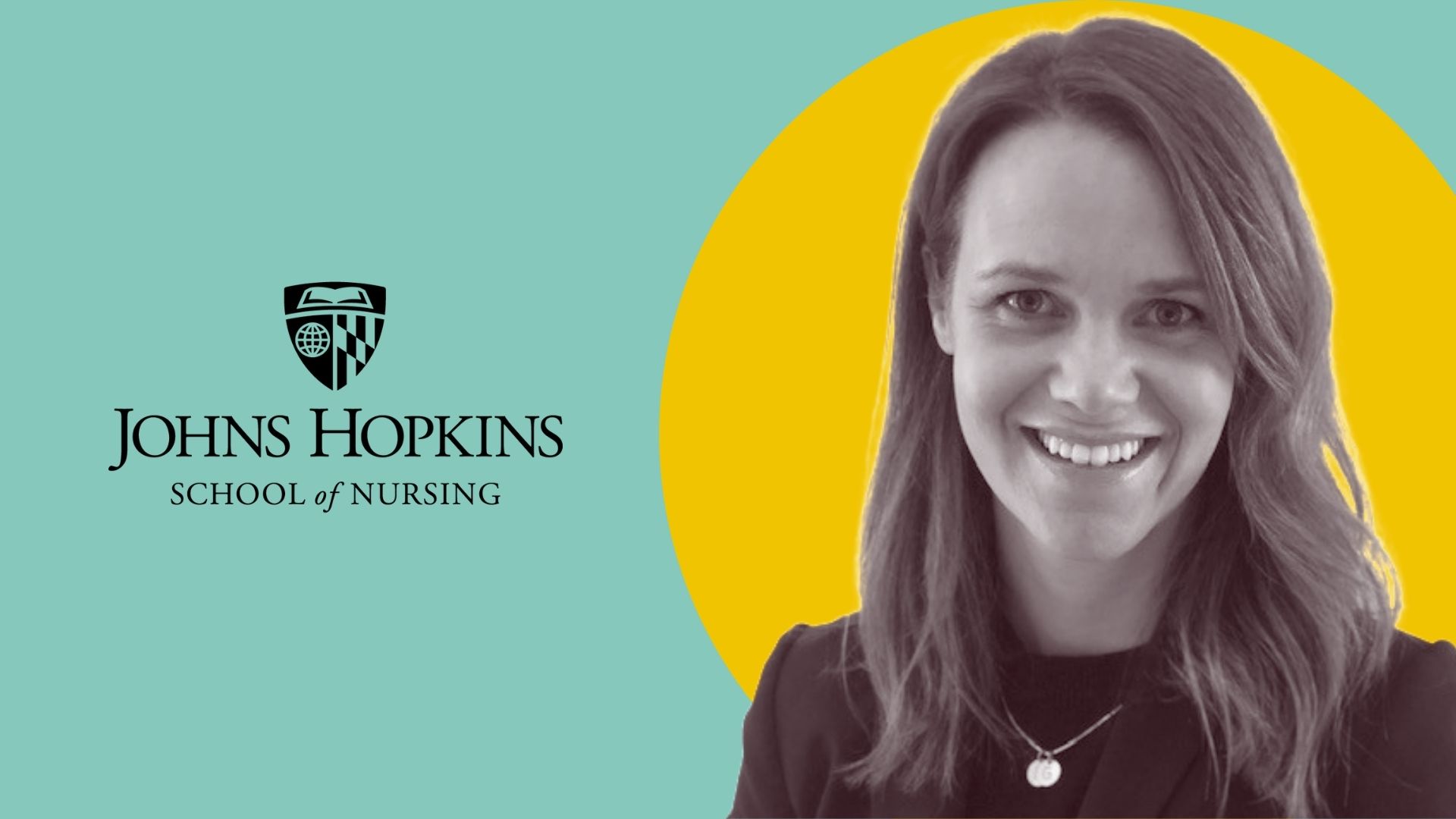Henderson-Hopkins School Partnership to Make Wellness a Key Part of “Optimal Learning Experience”
By Sara Michael
 A common image of school health programs is the weeping child headed to the nurse with a tummy ache or a sore throat. Yes, it happens every day. But there’s a much bigger picture that drew the Johns Hopkins University Schools of Nursing and Education into a unique partnership with the city of Baltimore. It’s about treating that sick school kid today, teaching the child how not to get sick tomorrow, and extending that health education to the family to begin improving the well-being of the entire neighborhood.
A common image of school health programs is the weeping child headed to the nurse with a tummy ache or a sore throat. Yes, it happens every day. But there’s a much bigger picture that drew the Johns Hopkins University Schools of Nursing and Education into a unique partnership with the city of Baltimore. It’s about treating that sick school kid today, teaching the child how not to get sick tomorrow, and extending that health education to the family to begin improving the well-being of the entire neighborhood.
That’s a major concept behind Elmer A. Henderson: A Johns Hopkins Partnership School. “We have had ongoing relationships with city schools, but not at the scale of this involvement,” says Phyllis Sharps, PhD, RN, FAAN, and associate dean for community and global programs at the School of Nursing. “This is the first really large enterprise we have done and the first collaboration with the School of Education.”
The Henderson-Hopkins School is slated to open in a new facility in January that will eventually accommodate 540 children in kindergarten through eighth grade, plus 175 children in an Early Education Center. The school exists today in a temporary location. It’s a city public school but is operated as a contract school by the School of Education, which will be making curriculum decisions, for example. And health education will have a premium spot through a comprehensive wellness initiative. “We are trying to get away from the idea of going down to the nurse’s office to get well,” says David Andrews, dean of the Johns Hopkins University School of Education. “Wellness should be integrated across the whole enterprise.”
As well as enhancing health services, the partnership at Henderson-Hopkins will offer a place to foster interprofessional bonds between the university schools and opportunities for nursing students to serve and learn from the community.
When the School of Education was asked to assume the operator role of the school, officials began searching for other options for school health, says Keri Frisch, MS, program manager at the School of Nursing. Colleagues from top ranked schools of medicine, nursing, and public health were consulted about the school health program. The Hopkins School of Nursing’s vision, it was determined, was a good match for the new school’s philosophy.
“A vision of the school was that it would be a premier school and include all the best elements of services and support that the university and community could provide,” says Sharps.
That means the school’s model will follow the Centers for Disease Control and Prevention’s coordinated school health program strategy, which has eight components, Frisch explains: health education; physical education; health services; nutrition services; counseling and social services; a healthy and safe school environment; health promotion for the staff; and family and community involvement.
This model, built around a central health suite in the new building, will be phased in over three years, with the first phase early next year including onsite and linked health services, mental health services and family support services for enrolled students and families. Future phases will include the integration of physical education and nutrition services, home visitation services, health education for parents and community members, and a health promotion program for staff.
At the helm of this comprehensive effort will be the School of Nursing. Its support will be phased in over time, but the initial plan is to provide nursing care for infants though pre-K students. In addition, a School of Nursing faculty family nurse practitioner will spend 20 percent of his or her time at the school. Another notable addition for the Hopkins-Henderson school will be Frisch’s position as the health program manager.
Health will also be integrated into the curriculum. The vision includes using pedometers in a math lesson, or discussing calories as energy units in science–these kinds of lessons connect the subjects back to health. That’s a unique education plan for Henderson Hopkins.
“We want health education to be an integral part of their life, so that it will always be incorporated into their lifestyle,” Sharps says, explaining that now children’s needs extend beyond immunizations and basic care. Particularly in an urban setting, the health challenges families may face extend into the social and economic realms.
“We hope to eventually engage parents, because they are an important part of how children eat and sleep and [are active],” she says. “We like the idea of the synergy of all of it working together to give the children the best start in all areas.”
Annette C. Anderson, PhD, assistant dean for community schools in the School of Education, agrees. The school is designed to give students the “optimal learning experience,” she says, which extends beyond the 9 a.m.-3 p.m. school day. Through partnerships with the university and community, the school’s health education can extend beyond the brick walls to other linked health organizations.
“We want to provide an experience that will also expand beyond just the students,” Anderson says. “We want it to be about the entire family.”
The school’s benefits are expected to extend well beyond the students and their families. The site will become a service learning opportunity for nursing students, as well as those studying public health and medicine. Nursing students learning pediatric health and family development concepts in the classroom will now be able to observe those concepts and behaviors in a community setting, which will improve critical thinking skills and problem solving, and ultimately make them better nurses, Sharps says.
“We are going to create wonderful service learning activities for the students,” Sharps says. “They will be engaged in clinical learning in community settings.”
Nursing students will also have a chance to engage with other disciplines: teachers and medical and public health students, for example. That’s how health care will be provided in the future, Sharps notes, with professionals across the spectrum connecting to provide services.
Henderson-Hopkins will expose students and others to that inter-professional interaction, and the partnership between the schools of Nursing and Education has established a unique forum for this collaboration. Expertise in health care and education delivery are working toward the same goal, for the benefit of the students, the community and the university. When professionals learn together, Sharps notes, they are more likely to be more collaborative and work together.
The disciplines will also partner to evaluate the success of the approach. A health education and behavioral data system will be put in place to facilitate personalization of students’ programs and goal tracking, Andrews says. The data will help officials monitor the programs’ efficacy and impact on the students and the community.
So far, collaboration between schools has run smoothly, Andrews says. “The School of Nursing has been a great partner and conduit to the rest of the health system. We share a common philosophy of working in the community and with the families.”
 Wald Center Returns to Lead Community Care
Wald Center Returns to Lead Community Care PhD Student’s Key Role in Protecting Abused Children
PhD Student’s Key Role in Protecting Abused Children Hey Cabbie! Tell Me About Baltimore…
Hey Cabbie! Tell Me About Baltimore… Breaking the Mold: Alumni Talk with Katherine Phillips
Breaking the Mold: Alumni Talk with Katherine Phillips Baltimore Living and Tips for a Seamless Transition
Baltimore Living and Tips for a Seamless Transition







